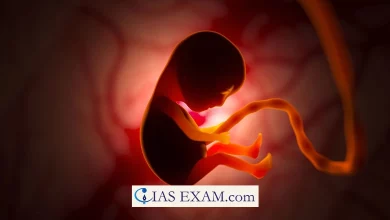Scientific Communication in India
Syllabus: Science and Technology[GS Paper-3]

Context: The article highlights the significance of effective science communication in India, showcasing examples such as the Chandrayaan-3 mission and the spread of COVID-19 information. It also suggests that science communication in India has both new possibilities and challenges.
Scientific communication:
- Science communication describes the process of dissemination of scientific information to distinct individuals in an informative and captivating way.
- It can be achieved through journalism, public speaking, social media channels as well as educational activities.
- The goal is to help people understand better what scientific ideas are and why they matter.
- For instance, the communication of India’s lunar exploration mission Chandrayaan-3 could have been a good application of science transmission.
- By providing live broadcasts and regular updates, people in India were informed about the progress and scientific discoveries of the mission, leading to a widespread understanding and discussion.
Significance of science communication in Indian society:
- Creating more attention towards scientific advancements like India’s Mars Orbiter Mission in order to understand better space missions.
- Prevention of misinformation and vaccinating people during the COVID-19 pandemic by giving them precise information.
- Involving in campaigns to clarify the significance of conservation and sustainable lifestyles towards a cleaner environment.
- Events targeted at scientists to interact with the public, aiming to close the gap between researchers and community.
- Developing scientific inquiry activities for students through education programs and science fairs.
- Emphasising the need for government policies that are based on scientific evidence in fields such as health care, environment and technology.
- Advertising advances in research to attract financial and operational support for further investigations.
- Building trust and credibility by sharing updates and findings from scientific institutions.
- Informing individuals on the science behind their selection so that they can make effective decisions. In crises, ensuring timely delivery of reliable information that helps the public in taking appropriate measures for safety.
Role of Government:
- The Publications & Information Directorate (PID) was established in 1951 under CSIR and is responsible for publishing national science magazines in Hindi, English, and Urdu.
- The Birla Industrial and Technological Museum was established in 1959 to promote science education and highlight India’s scientific heritage.
- The 42nd Amendment to the Constitution in 1976 introduced Article 51 A (h), emphasising the duty of citizens to develop a scientific temper.
- The National Council for Science and Technology Communication was formed in the 1980s to popularise science, and Vigyan Prasar, an autonomous organisation, was established in 1989 for the same purpose.
- In 2021, the CSIR-National Institute of Science Communication and Policy Research was created to continue promoting science communication by merging two previous institutions.
- Various national science funding agencies and research organisations actively engage in science communication through various means such as press releases, social media campaigns, exhibitions, and lectures.
Way Forward:
To improve science communication in India, it is recommended to introduce master’s and doctoral programs in science communication, encourage scientists to engage in communication efforts, and establish a professional organisation to develop comprehensive communication frameworks with the help of various stakeholders and experts.
Conclusion:
- Science communication plays a vital role in improving scientific knowledge, engaging the public, and making informed decisions in India.
- By addressing existing shortcomings and adopting a proactive approach, a strong science communication system can be established, which will bridge the divide between science and society, and drive scientific advancements.
Source: TH





.png)



